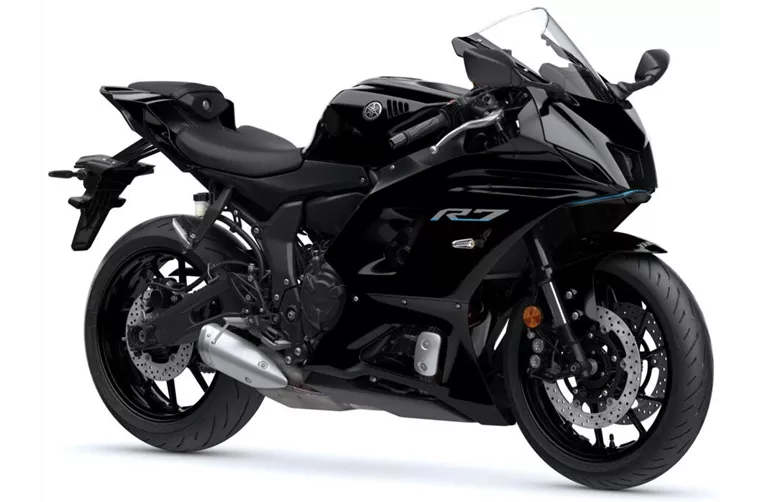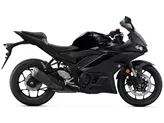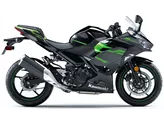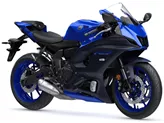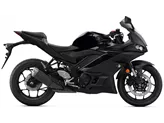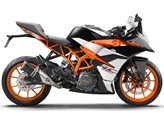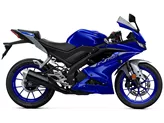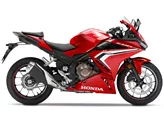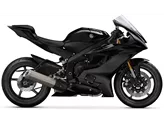Yamaha YZF-R3 2019 vs. Yamaha R7 2021

Yamaha YZF-R3 2019
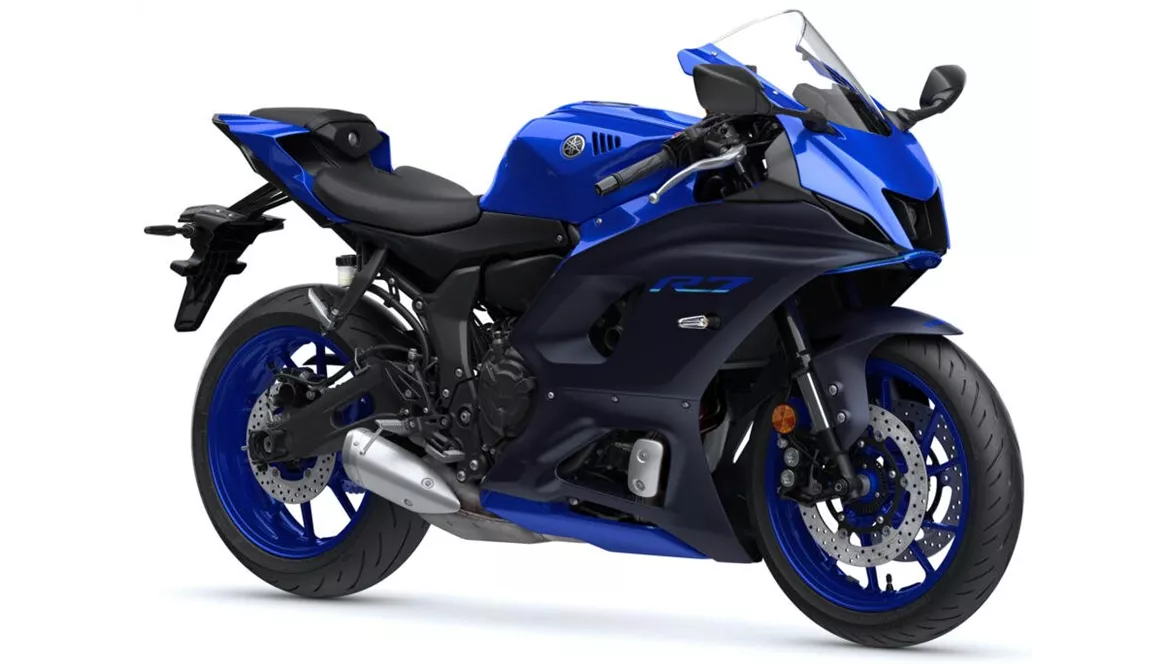
Yamaha R7 2021
Vue d’ensemble - Yamaha YZF-R3 2019 vs Yamaha R7 2021
The Yamaha YZF-R3 model year 2019 and the Yamaha R7 model year 2021 are both supersport motorcycles from Yamaha, but they have several differences in terms of technical specifications and strengths.
Starting with the engine and drive train, the Yamaha YZF-R3 2019 has a bore of 68 mm and a stroke of 44.1 mm, while the Yamaha R7 2021 has a larger bore of 80 mm and a stroke of 68.6 mm. This results in a higher engine power for the R7, with 73.4 HP compared to the YZF-R3's 42 HP. The R7 also has a higher torque of 67 Nm compared to the YZF-R3's 29.6 Nm. Both motorcycles have a compression ratio of over 11 and feature a 2-cylinder engine with 4 valves per cylinder and DOHC technology. However, the R7 has a larger displacement of 689 ccm compared to the YZF-R3's 321 ccm.
In terms of suspension, both motorcycles feature upside-down telescopic forks in the front and a swing arm suspension in the rear. However, the Yamaha R7 2021 has a larger diameter front suspension of 41 mm compared to the YZF-R3's 37 mm. This indicates that the R7 may have a more robust and capable suspension system.

Yamaha YZF-R3 2019
In terms of chassis, the Yamaha R7 2021 has a significantly steeper rake of 66.3 degrees compared to the YZF-R3's 25 degrees. This suggests that the R7 is designed for more aggressive and sporty riding, while the YZF-R3 may offer a more stable and comfortable riding experience.
The braking system also differs between the two models. The Yamaha YZF-R3 2019 has a single disk front brake, while the Yamaha R7 2021 features double disk front brakes. This indicates that the R7 may offer better braking performance and control.
Both motorcycles come with ABS as part of their advanced rider assistance systems, providing added safety and control.
In terms of dimensions and weights, the Yamaha R7 2021 has slightly wider front and rear tires compared to the YZF-R3, with 120 mm and 180 mm widths respectively, compared to the YZF-R3's 110 mm and 140 mm. The R7 also has a slightly longer wheelbase of 1395 mm compared to the YZF-R3's 1380 mm. However, the R7 is also slightly heavier, with a kerb weight (with ABS) of 188 kg compared to the YZF-R3's 169 kg. Both motorcycles have a fuel tank capacity of around 13-14 liters.
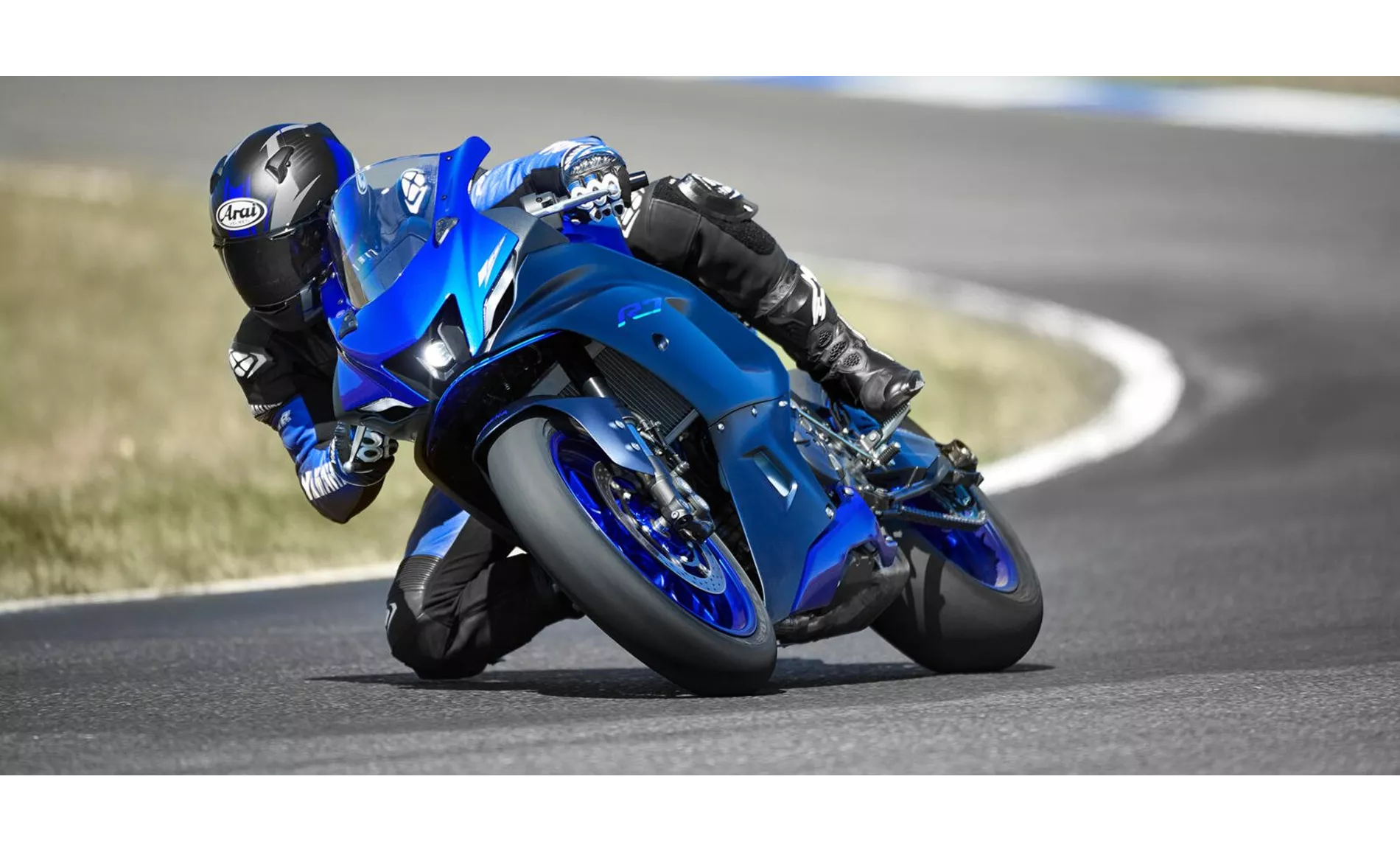
Yamaha R7 2021
In terms of strengths, the Yamaha YZF-R3 2019 is praised for its high-revving engine, sufficient power for everyday use and compact racetracks, stable handling, and suitability for long distances. On the other hand, the Yamaha R7 2021 is commended for its high-torque CP2 engine, sporty riding position, suspension set-up, standard tires, and being a good entry-level trackday bike.
As for weaknesses, the Yamaha YZF-R3 2019 is criticized for its poor throttle response at low revs, lack of feedback in the brake lever, and a knee angle that might be too acute for some riders. The Yamaha R7 2021 is mentioned to lack a quickshifter as standard, which could have been a nice addition.
In conclusion, the Yamaha YZF-R3 2019 and the Yamaha R7 2021 are both impressive supersport motorcycles from Yamaha, but they have notable differences in terms of engine power, suspension, chassis, braking system, and dimensions. Each model has its own strengths and weaknesses, catering to different riding preferences and needs.
Caractéristiques techniques Yamaha YZF-R3 2019 par rapport à Yamaha R7 2021
Avantages et inconvénients en comparaison
Avantages et inconvénients en comparaison
Yamaha YZF-R3 2019

Avec la nouvelle YZF-R3, Yamaha a pris la très bonne base de la première génération et l'a développée avec succès. Elle n'est pas seulement plus adulte visuellement, mais aussi plus compétente à grande vitesse. Lorsque l'on conduit la R3 à la limite, on sent rapidement pourquoi Yamaha a mis en place sa propre coupe sur cette moto, car même le modèle de série donne un sentiment de sécurité à haute vitesse. Malgré tout, il y a encore une marge de progression, surtout en utilisation quotidienne, lorsque la réactivité rude à bas régime et le mauvais feedback du levier de frein provoquent quelques moments de frustration pendant la conduite.
Yamaha R7 2021
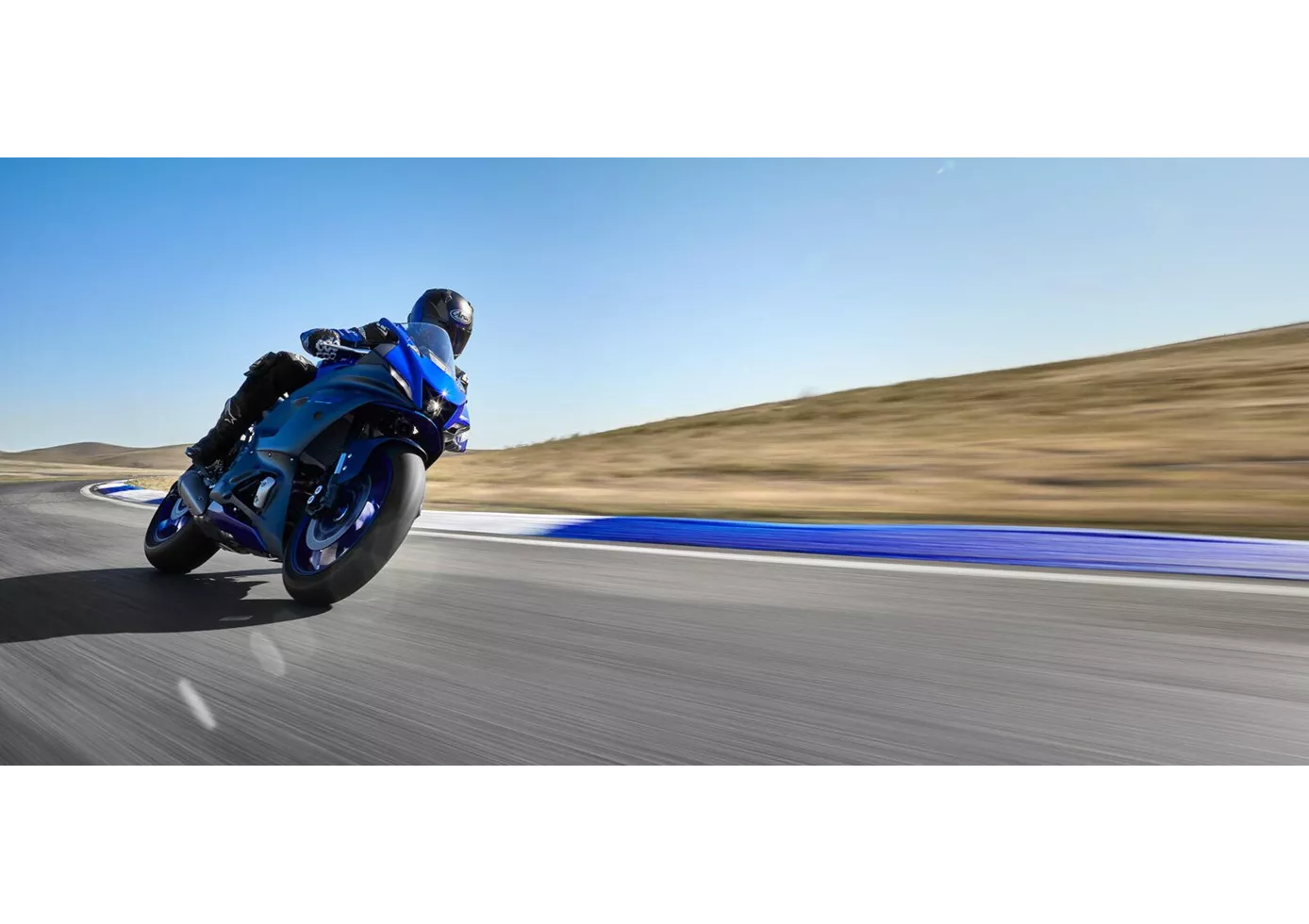
Malgré la combinaison plutôt particulière d'un moteur raisonnable de 73,4 CV de classe moyenne et d'un look sportif extrêmement agressif, la R7 n'est en aucun cas un mouton déguisé en loup. Les performances de conduite, qui se situent quelque part entre la R3 et la R6, se sont révélées en pratique bien plus puissantes que ne le laissaient supposer les valeurs pures sur le papier, et en termes de géométrie, de châssis, de freins et de pneus, les ingénieurs de Yamaha ont vraiment fait leurs devoirs. De plus, la Yamaha R7 possède toutes les qualités pour s'amuser sans trop d'investissement sur une piste de course compacte comme le Pannoniaring. Mais elle se sent bien sûr plus à l'aise sur la route, et c'est là qu'elle doit être à notre avis. Le prix d'achat est plus que correct compte tenu de l'ensemble du package - ce qui permet de pardonner le fait que le Quickshifter n'est pas embarqué d'origine et doit être acheté en option.
Comparaison des prix Prix moyen du marché Yamaha YZF-R3 vs Yamaha R7
There are a few key differences between a Yamaha YZF-R3 2019 and a Yamaha R7 2021. There are the same number of bikes of both models available on the 1000PS.de marketplace, specifically 4. It takes less time to sell a Yamaha YZF-R3 with 99 days compared to 161 days for a Yamaha R7. Since model year 2015 1000PS.de editors have written 11 reviews for the Yamaha YZF-R3 and 9 reviews for the Yamaha R7 since model year 2021. The first review for the Yamaha YZF-R3 was published on 10/17/2014 and now has more than 53,600 views. This compares to more than 92,800 views for the first review on Yamaha R7 published on 5/18/2021.

